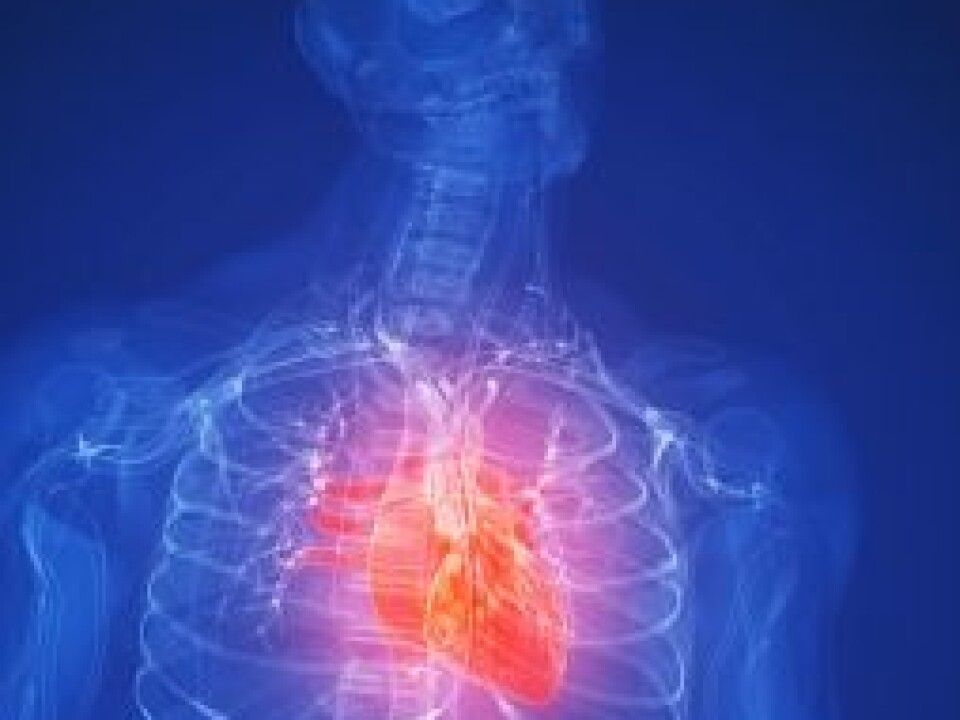
Dope leads to dungeon and the dole
Cannabis smoking can give you a heart attack and it increases the odds that you’ll be spending more time behind bars or queuing up in welfare lines. Researchers are less certain about other harmful effects.
Denne artikkelen er over ti år gammel og kan inneholde utdatert informasjon.
“It’s still more dangerous for Norwegian youth to smoke hash than to drink alcohol,” says Willy Pedersen, a sociologist at the University of Oslo.
At a cannabis conference hosted by the Norwegian Institute for Alcohol and Drug Research (SIRUS) in Oslo this month, three experts were invited to summarise the hazards involved with breaking the law and smoking a joint.
The aspect of cannabis which correlates most clearly to a harmful effect is in the social sphere: in Norway the culture linked to cannabis poses the biggest danger to users, according to Pedersen.
Cannabis use makes it much more likely you’ll end up on welfare or as a jailbird.
Can lead to criminality

Hashish is less linked to criminality and violence than other types of narcotics, and the marihuana market is considered fairly non-violent.
"But cannabis is dangerous nevertheless because the culture it entails still has a surprisingly strong impact,” says Pedersen.
He’s been active in debates about cannabis legalisation in Norway for decades and has co-authored a book on cannabis culture.
Pedersen thinks that the cannabis culture is more harmful than advocates of legalisation like to admit:

“Hash can lead to subculture identification and affiliation, and besides, the substance is illegal. Many smokers also dabble in minor dealing. Selling is called ‘helping out’ and if you get involved in this economy you can acquire some strong links that can have serious consequences.”
Pedersen interviewed prisoners when working on the book. “Hashish dealing was the road into criminality for quite a few of them," he says.
Charged with a crime or on the dole
“The mechanisms are very complex, but we found that a person who has used cannabis when he’s 20 is much more likely to be charged with a crime within the next seven years than a 20-year-old who hasn’t used it,” says Pedersen.
Of course such charges were very often related to drug crimes. Another study has shown the same pattern with regard to social welfare.

It’s more likely for a person who has used cannabis on a weekly basis in the past year to be on welfare within the next three years than for persons who haven’t used the drug.
“The risk was actually extremely higher for cannabis users than for non-users. It’s hard to document how much is cause and how much is effect in such matters, but intuitively I’d say there are some very strong social hazards linked to this substance,” says Pedersen.
Less clear on medical consequences
The researchers are far less certain about the medical and overall social consequences of smoking pot.
Jørgen Bramness at the Norwegian Centre for Addiction Research at the University of Oslo spoke at the conference about the medical and psychological consequences of cannabis use, whereas Ingeborg Rossow from SIRUS talked about the harm users can inflict on others.
These can be motorists who get in a head-on collision with a driver who’s been smoking weed, the foetus in the womb of a marihuana-smoking mother, or consequences for the health care system and society in general:
“There’s no doubt about the medical and psychiatric consequences of cannabis use. But we have to be a little careful when estimating how extensive and serious these links are,” says Bramness.
Forty heart attacks annually
Among the strongest confirmed risks is the danger of heart attacks.
When you smoke hash or marihuana your heart rate rises when you start getting high. When your heart beats faster, the chances of cardiovascular troubles also increase.
“Blood pressure rises, and the chances of a heart attack or a stroke increase because of this acute effect. When this impact wears off, the opposite occurs. You get a lower heart rate to offset the higher rate you had earlier, and here too there’s a bigger risk of heart attacks,” explains Bramness.
An estimated 40 heart attacks in Norway every year could be attributed to this side-effect.
Uncertain about cancer and schizophrenia
The evidence is much less certain for other types of injuries or harmful effects, particularly regarding lung cancer and mental health.
“Cannabis smoke contains carcinogens and some studies have determined a clear increase in lung cancer with use, also for those who don’t mix cannabis with tobacco. One study showed that the risk among pot smokers increased eight-fold against those who don’t smoke it. But other studies have found no increased risk or incidence,” says Bramness.
“A sizeable amount of solid research has been conducted regarding whether cannabis smoking can lead to schizophrenia. For instance, a 40-year Swedish study has shown an increased probability that persons who had smoked cannabis when they were first examined would later develop schizophrenia.”
But these studies have subsequently been criticised for using faulty methods.
“There could be factors that lead to both the smoking of cannabis and to schizophrenia, and perhaps persons who become schizophrenic are more likely to smoke cannabis − a case of converse causality,” says Bramness.
He explains that schizophrenia is one of the most inheritable disorders we know about. A study in Australia found no increase in schizophrenia following the enormous rise in cannabis use in the 1960s and onward.
More injury to others with alcohol
The same goes for injuries to innocent bystanders – there’s a lot of uncertainty here too. For instance look at traffic injuries,” says Rossow:
“There’s no doubt that cannabis use reduces driving skills, and studies have shown that driving under the influence increases the risk of traffic injuries. This is particularly true when cannabis and alcohol are used simultaneously.
“But the question arises: what share of the traffic injuries can be ascribed to cannabis use? I’ve never seen any figures on it. A large percentage of drivers who are tested with cannabis in their bloodstream or urine also test positive for other intoxicants − mainly alcohol and benzodiazepines,” says Rossow.
The latter is a sedative, found for example in Valium and Sobril.
“I’d venture to say our knowledge about risks to innocent bystanders linked to cannabis use is relatively limited and fragmentary,” says Rossow.
“From what we’ve seen so far in this area, I would guess the scope of innocent bystander injuries is much less for cannabis than for example with alcohol.”
Can legalisation counteract social injuries?
The social damage is quite evident – but Pedersen doesn’t think the current regulatory regime is the optimal way of counteracting such hazards. In his book he’s suggested that legalisation might be the best way of curtailing cannabis use.
Legalisation could make cannabis square:
He thinks much of the strong appeal of the cannabis culture would dissipate with legalisation. When he worked on the book he asked people if they wouldn’t like to avoid the legal hassles, but they were surprisingly ambivalent:
“One girl said she wouldn’t want to buy hash at the drug store. ‘Standing in line there, along with the high blood pressure crowd or junkies waiting for their dose of methadone, or maybe with my grandmother who’s buying a nicotine patch? No thanks!’ she said. She thought it would take some of the charm out of it,” says Pedersen.
“If cannabis is legalised, some of the enticement might vanish, the symbolic and cultural enchantment,” he concludes.
Translated by: Glenn Ostling






































